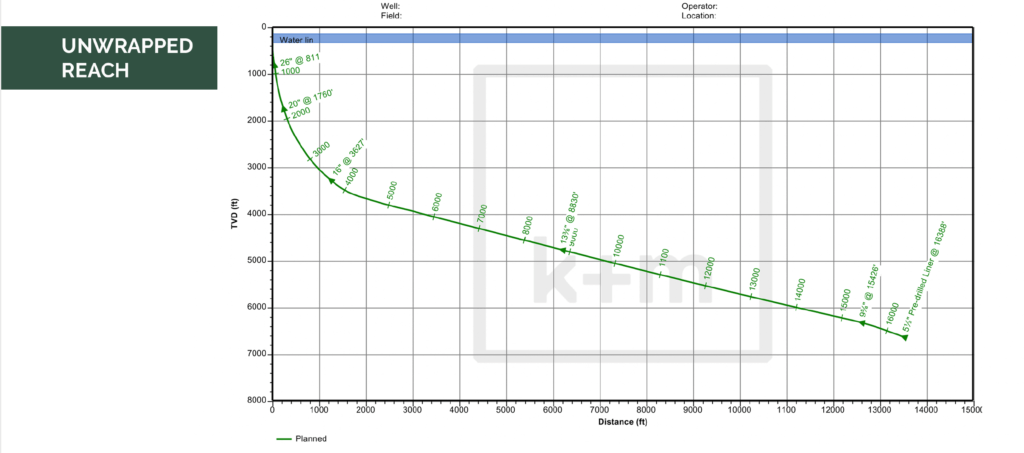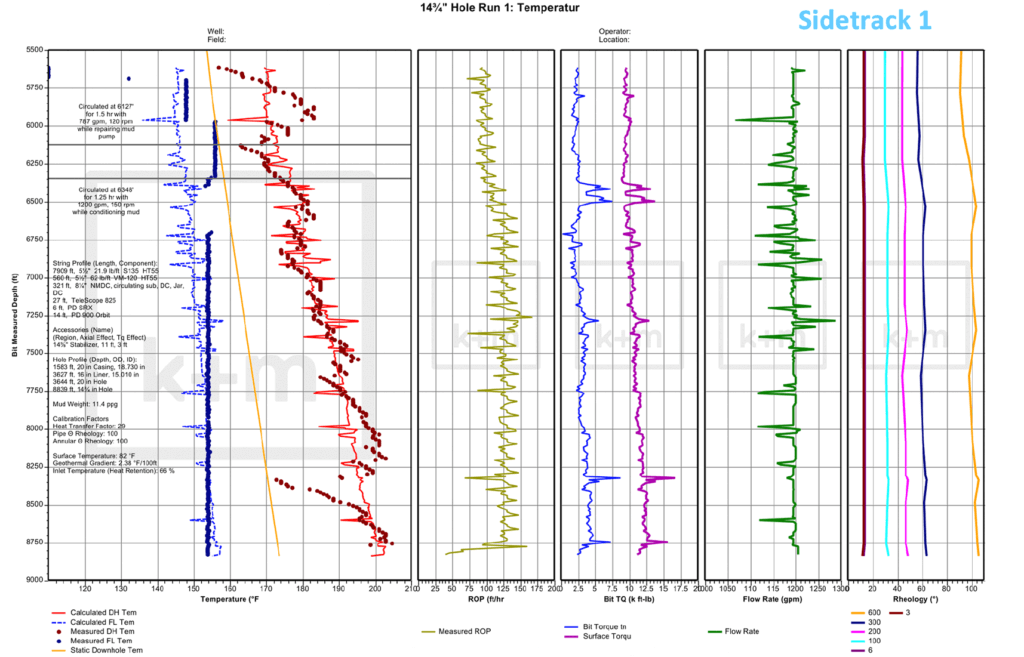It is possible for the bottom hole circulating temperature to be higher than bottom hole static temperature? This is contrary to popular belief that circulation cools down the well/BHA. The reason that the circulating temperature is higher is because the pressure drop along the drill string during circulation is dissipated as heat energy to increase the temperature. Higher bottom hole circulating temperature is more likely to occur in bigger hole sizes such as 17½” and 12¼” as the flow rates used are higher. The use of synthetic oil-based mud is also more likely to result in higher bottom hole circulating temperature compared water-based mud as the specific heat for base oil is significantly lower than water i.e. less heat energy required to increase the temperature by a specific amount. In addition, water-based mud typically has lower plastic viscosity (PV) value which reduces the drill string pressure drop, i.e. less heat generated.
Bottom hole circulating temperature higher than static temperature may result in pre-mature BHA failure if the circulating temperature is approaching/ exceeding the limits of the BHA. It will also result in higher flow line temperature. If heat is not dissipated in the mud pits fast enough, the suction temperature will also be higher and when suction temperature exceeds 7o·c (158°F) the mud pumps reliability reduces as the polyurethane material on the swabs typically starts to soften when temperature exceeds 7o·c (158°F). In some situations, mud cooler is necessary to cool down the flow line temperature. As such, modelling of bottom hole circulating, flow line and suction temperatures are crucial in achieving a high-performance drilling operation.



Above are two temperature plots with drilling parameters for the same well. The top plot is for sidetrack 1 and the bottom plot is for sidetrack 2 (BHA was stuck during the trip out in sidetrack 1). In sidetrack 2, the well path, drill string and BHA are engineered to reduce the pressure drop, and the bottom hole circulating temperature at TD of sidetrack 2 is significantly less than sidetrack 1 for the same flow rate and mud type.